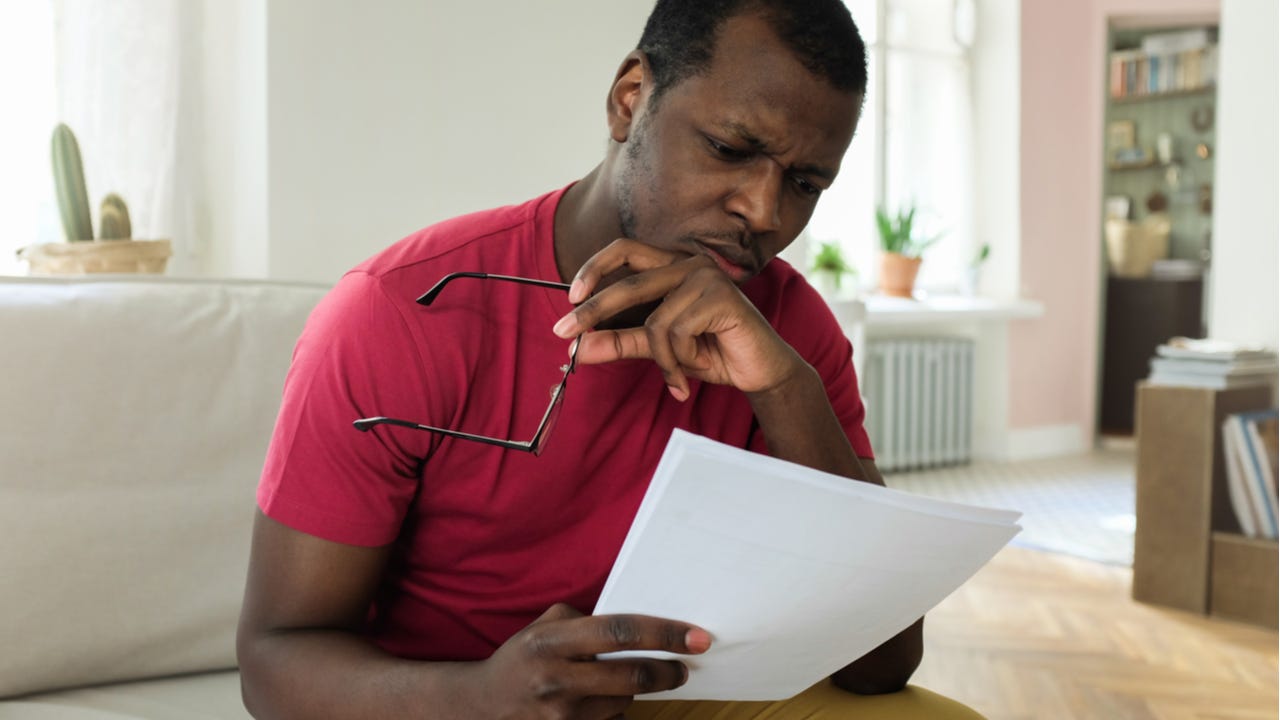What is a chargeback?

The Bankrate promise
At Bankrate we strive to help you make smarter financial decisions. While we adhere to strict , this post may contain references to products from our partners. Here's an explanation for . The content on this page is accurate as of the posting date; however, some of the offers mentioned may have expired. Terms apply to the offers listed on this page. Any opinions, analyses, reviews or recommendations expressed in this article are those of the author’s alone, and have not been reviewed, approved or otherwise endorsed by any card issuer.
There are plenty of instances where you might need to dispute a charge posted to your credit card account. Maybe an item you ordered online showed up damaged, but the retailer you ordered from won’t take it back. Perhaps you bought something online and never received it, or your purchase was fine but your credit card was charged twice.
These are all situations where you might want to pursue a chargeback on your credit card instead of asking for a traditional refund. While chargebacks should be used sparingly since they can cause problems for merchants on the other end of the transaction, they are a valuable tool for consumers who deserve their money back.
What is a chargeback?
A chargeback takes place when you pursue a credit to your account for a purchase via your credit card issuer. While it may be possible to pursue a refund or another fix for your transaction directly with the merchant you purchased from, a chargeback effectively leaves your credit card issuer and other parties in charge of making a determination in your case.
Chargebacks save consumers time when it comes to figuring out how to get their money back when a transaction goes awry. You may need to provide your credit card issuer with details and proof of your chargeback claim, but your credit card issuer will reach out to the merchant, figure out what went wrong and decide whether you pay for the transaction or not.
Chargebacks vs. refunds
If you are unhappy with a product you purchased and you have the means to do so, you should return it to the retailer with your receipt and ask for a refund. Orders completed online may be returned by calling customer service, providing proof of your purchase and mailing your product back to them.
In both of those cases, you would get a traditional refund. However, you should know that chargebacks and refunds are not the same thing.
Refunds
A refund for an item comes directly from the merchant you purchased the item from. Return policies can vary, so you may not need a receipt to secure a refund. In some cases, you may be stuck with a store credit instead of your money back, but the transaction is taken care of by the merchant (and not the credit card issuer) either way.
Chargeback
A chargeback takes place when you contact your credit card issuer and dispute a charge. In this case, the money you paid is refunded back to you temporarily, at which point your card issuer will conduct an investigation to determine who is liable for the transaction.
How do chargebacks work?
When you file a chargeback with your credit card issuer, you are initiating a process that includes multiple organizations that will try to figure out who should pay for the transaction in question. Parties involved in a chargeback include:
- The account holder (you), who disputed the transaction to begin with
- Your credit card issuer, which may be a company like Chase, American Express or Capital One
- The merchant, which is the company you purchased goods or services from
- The merchant’s bank, which allowed them to accept credit card payments
- The network that processed the credit card charge and decides how chargebacks are handled internally, which could be Visa or Mastercard
Filing a chargeback on your credit card sets off a chain of events. Generally, you will receive a quick credit for the money you paid for the item, either from the card issuer itself or the credit card network. However, this temporary credit is only yours while the investigation takes place, and you’ll have to wait to find out if the credit becomes permanent.
At this point, your credit card issuer, the credit card network and the merchant’s bank may look over the charge to determine its legitimacy, as well as the best course of action. It may be decided that your card issuer is at fault, but the disputed charge may also be sent to the merchant, who can ignore, accept or dispute the chargeback.
If the merchant you purchased from disputes the chargeback, there may be some back and forth between all parties involved, and you may be asked to provide more proof to back up your case, such as receipts or communication between you and the retailer. Ultimately, the credit card network, which could be one of the four main ones — Visa, Mastercard, Discover or American Express — decides who pays for the charge.
Your credit card issuer is required to explain the final verdict to you in writing. If you win the dispute, the temporary credit you receive will remain on your account. If it’s decided the dispute is not valid, the purchase will be reinstated on your credit card account.
When to use a chargeback
Ordinarily, you should only initiate a chargeback on your credit card if you cannot work the issue out with the merchant, or you have been unable to contact them to try. However, you can also initiate a chargeback if you believe a purchase is fraudulent—as in, a charge you didn’t make posts to your account.
Specific examples of appropriate uses for a chargeback can include:
- A concert you bought tickets for was canceled, but the ticket seller won’t provide a refund.
- Your credit card was charged twice for a meal at a restaurant in another country.
- You purchased something online and never received it, but the merchant won’t pick up their phone.
- You were supposed to get a refund for an item several weeks ago, but the refund hasn’t been executed and you can’t get hold of the company.
- You notice a charge on your bill that isn’t yours.
If you do find a fraudulent charge on your credit card, you may want to take additional steps to protect your identity. While most credit cards offer zero fraud liability that gets you off the hook for fraudulent purchases charged to your account, it’s likely a hacker or thief has their hands on your account number. Since they may have more of your personal information, you should take steps to protect yourself, including monitoring your credit reports, signing up for fraud alerts and keeping a close eye on all your accounts so you’ll notice suspicious activity right away.
Can I dispute a credit card charge I willingly paid for?
You should never dispute a credit card charge you willingly paid for. Not only is doing so unethical, but you won’t be able to keep the initial credit you receive if you don’t deserve it. You should only use a chargeback when you are a victim of fraud, or when you are certain you should receive a refund but the merchant is unable or unwilling to grant one.
How to request a chargeback
The process can look different based on your card issuer, but most let you dispute transactions by phone, by email or using an online form or process. Plan on having details handy so you can explain what went wrong. Your credit card issuer will pick up the investigation from there.
The bottom line
Chargebacks provide a layer of protection for consumers who use credit cards to pay for goods or services, and you can file a chargeback regardless of whether the initial purchase was made in person or online. However, you should only file a chargeback when you cannot resolve the issue with the merchant or service provider directly. If you could get a refund by contacting the merchant or service provider directly, you should take this important step first.
Related Articles

How to use a credit card chargeback to get refunded for canceled events


